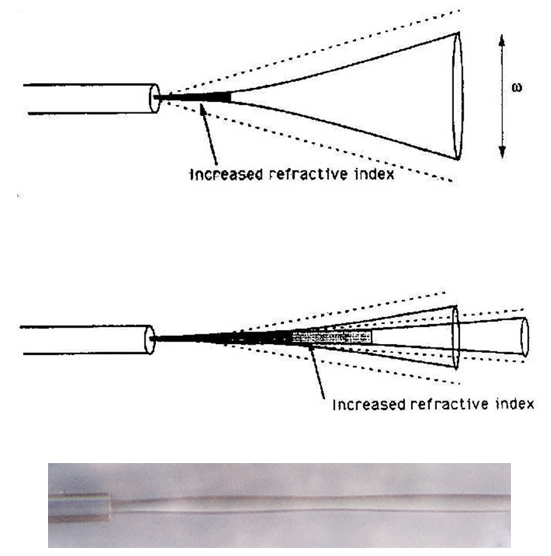|
|
|||||
| intern | ||||||
|
|
||||||
| ||||||||||
Micro-optical coupling structures for heterogeneous integrated photonic micro-systems based on 3D light-induced polymer componentsMain Researcher: Hannes Lambrecht The increasing data rates, due to technological progress in micro-processors, result in problems for the electrical data transfer in such systems. Indeed, with increasing clock rates and chip complexity it becomes difficult to deal with crosstalk, interference, signal distortion, etc. One could say that, in some situations, electronic data transmission has reached its maximal data rate. As for the long-distance data transmission (telecommunication), optical data transmission offers a solution to these problems. At small transmission distances, one speaks of “optical interconnection”.

Self-Written Waveguide principle In this PhD thesis we aim for innovative methods for the design and fabrication of 3D micro-optical structures for light-coupling between matrices of light-sources, fibers, photonic IC’s, detectors, etc. Making use of (combinations of) photosensitive polymers we want develop a method to write a 3D micro-optical structure in a volume of photosensitive material. Our work is mainly concentrated on writing waveguides in uv-curable polymers. The idea is to change (increase) the refractive index in some parts of the volume of liquid photosensitive material by illuminating these parts by a focused light beam. In fact the illumination causes a chemical reaction: the liquid material starts to polymerize in the illuminated parts and gets solid, while the non-illuminated parts stay liquid. A special way to write a waveguide makes use of this effect (increase of refractive index by illumination): a “self-written waveguide” is formed when a writing beam is introduced into photo-polymer from the edge of an optical device. As a result of a self-focusing effect, the writing beam is concentrated along the propagation axis to construct a straight path, forming a waveguide, see picture above. The problem with the waveguides or Self-Written wave guides mentioned so far is that only the illuminated or solid (polymerized) parts are liquid, while the rest stays liquid. These types of waveguides are not very useful because of mechanical instability (drift of the waveguide).
Other people involved: Patents Publications |